About This Recipe
When high protein bread became a trend, I knew I had to jump in for the sourdough world. After all, all of us sourdough people that are looking for versatile and healthy ways to use our sourdough starter need a good recipe like this one.
Why Cottage Cheese Bread?
I had to ask myself this question when I discovered “cottage cheese bread” was trending on Pinterest and a viral recipe on TikTok. The reason this bread is so beloved: protein. This bread includes a large amount of cottage cheese and egg whites, which make it a protein sensation.
What Kind Of Cottage Cheese Bread Is This?
I have seen many versions of cottage cheese bread since beginning my research on this recipe. There are two kinds that stand out as the most popular: the flourless cottage cheese bread and the bread machine cottage cheese bread. The flourless version, made by beating egg whites, mixing with cottage cheese, and baking, has been a social media sensation. It may be good, but it is not something attainable with sourdough baking. The bread machine version, made with flour, water, egg whites, cottage cheese, and yeast is simple, but I wanted even better, fluffier results and I wanted it to be sourdough.
This cottage cheese bread is a simple sandwich bread made with the basics, similar to the bread machine version, and includes flour. To keep the bread light and fluffy, I have increased the hydration, creating a dough that is fairly wet. This version is developed by hand, rather than by stand mixer, because of this. It does not include enrichments like butter or sugar to make it taste “better,” which helps keep the health value high. Does it still taste good? Absolutely. I would not publish a recipe that didn’t.
The Truth About The Comparison To Brioche
When described, this bread is often compared to brioche. I think this comparison is incredibly deceptive. Those who make this comparison may not understand the unique characteristics of brioche.
Both breads are light and fluffy, due to the addition of egg. However, brioche is made with a lot of butter. The butter makes for an incredibly tender bread – one that melts in your mouth with each bite. The whole eggs in brioche also add fat and flavor, while the addition of sugar works to reduce sourness in the slow-rising dough.
Cottage cheese bread is only enriched with cottage cheese and egg whites. The only similarity is the fluffiness added from the egg whites. While cottage cheese bread and brioche are both fluffy breads, they are not the same. One is meant as a health food, while the other is used as a base for sweet recipes. The lack of fat in cottage cheese bread leads to a completely different end result.
What I Love About This Recipe
My honest-to-goodness favorite thing about this recipe is that I can feed it to my kids and they think it is just regular white bread. They love it. And, I get the satisfaction of knowing they are receiving a good amount of protein from it. There is absolutely nothing “bad” in this recipe. I did not even choose to wash the loaf with butter like I do many of my sandwich breads. The combination of high hydration plus large amount of egg whites creates a bread that is light and fluffy. The cottage cheese does not add a fowl flavor. It acts more like milk in the dough more than anything else, which is a common addition to sandwich bread. Overall, this bread is like a feel-good, healthy version of a white bread.
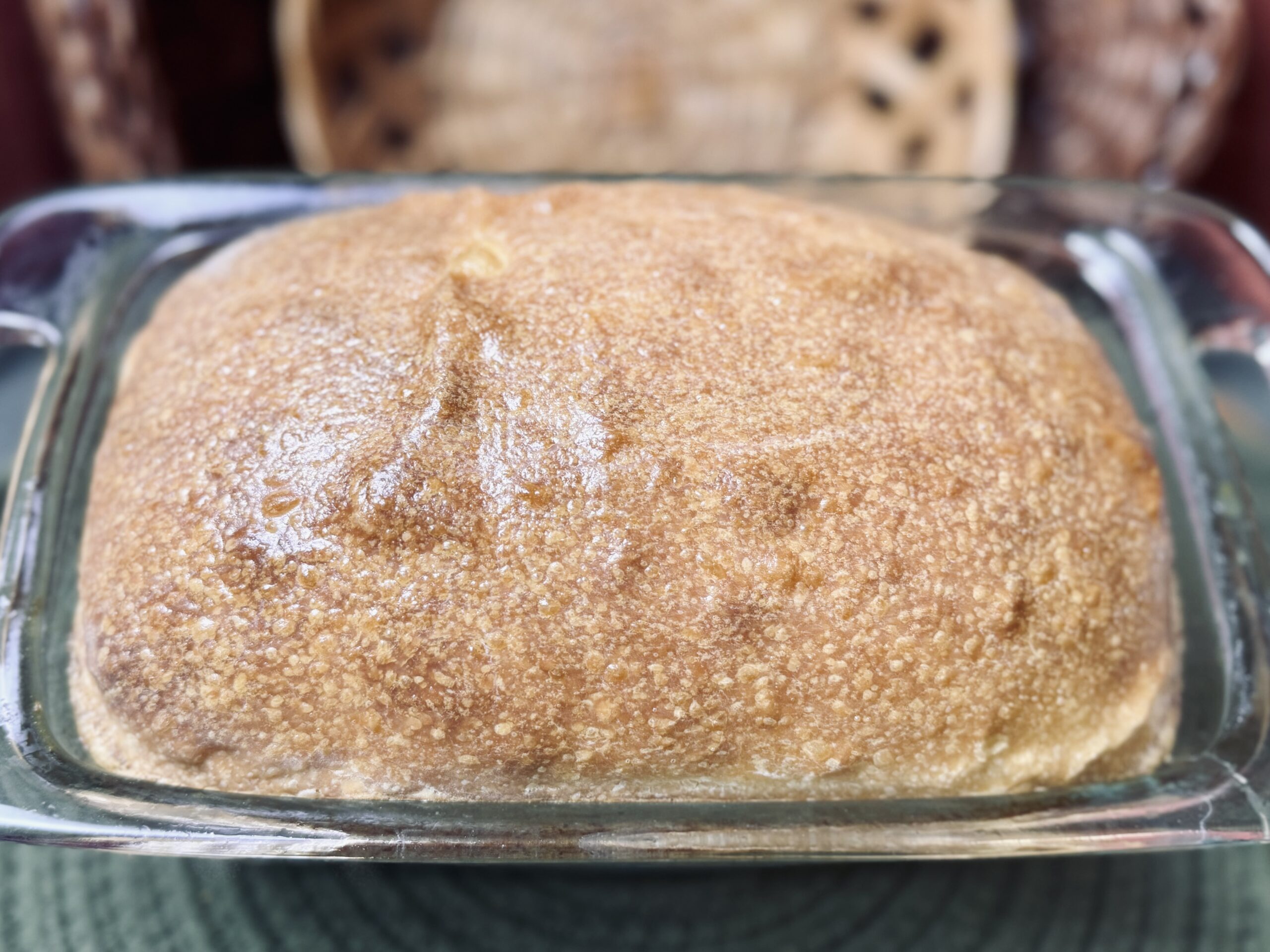
All The “Why’s”
Cottage Cheese
Because cottage cheese is a dairy product, the effects are similar to that of milk. Cottage cheese is a tightening agent, meaning it creates a firmer gluten structure that requires an extended fermentation (it needs more air to blow up). It also adds density to the dough and has a tendency to burn if baked at too high of a temperature in the oven.
If you are not a fan of cottage cheese, fear not – its use in this recipe does not lead to a strong “cottage cheese” flavor. The most important reason for its addition is protein, making the end product more nutritious. Because cottage cheese contains moisture, its use, combined with the use of egg whites, means the addition of any other kind of liquid (milk or water) is not necessary in this recipe. By keeping this ingredient in proportion with everything else, its health benefits can shine, while still producing a delicious bread.
Egg Whites Over Whole Eggs
Egg whites contain proteins that help structure the dough (as well as [maybe] help your diet). While they can help create a tall loaf with lots of fluff, they also result in an extended fermentation, due to the fact that they, along with cottage cheese, tighten the gluten structure.
I had to test both egg whites and whole eggs, knowing this question would come up. Both egg whites and whole eggs have the same effect, meaning whole eggs can be substituted for egg whites if you prefer. My personal preference is just the egg whites for their more neutral flavor. Because this dough is not enriched with copious amounts of butter (like brioche), I do not find the additional fat and flavor from the egg yolks to fit the neutral flavors I’m going for in this sandwich bread. It’s just not my preference.
This recipe can be made with freshly separated egg whites, or with egg whites that come in a carton at the store and have been pasteurized. And, of course, use whole eggs (the same amount by weight) if you prefer.
Neutral Oil
A small amount of neutral oil helps to lock in moisture and keep the bread (and crust) soft during/after baking. Sandwich bread is meant to be soft, not crusty or excessively chewy, making oil incredibly helpful to achieving the right texture.
Since we are only using a small amount of oil, gluten development is not affected enough that we have to change our technique. This bread is still easily developed by hand through time, a little bit of kneading, and folds.
Bread Flour
As per usual, I love to use bread flour. This recipe is no different. Bread flour contains a higher percentage of gluten-binding proteins, which helps gluten come together quicker and stronger, helping us to create a strong dough by hand. Due to the cottage cheese and egg whites, gluten will struggle to come together anyway, meaning bread flour can be very helpful.
You’ll also notice I use less bread flour in this recipe than I do others. Unlike other sandwich bread recipes, I found that a cottage cheese bread made from a stiff dough results in a bread that is far too dense and tastes like cardboard. A wetter dough (unlike a stiff dough) encourages gluten to come together, which helps the dough hold in air – keeping the loaf light. It could be that too much flour paired with tightening agents like eggs and cottage cheese just creates too tight a dough, causing fermentation to struggle. Either way, the extra moisture is helpful in this recipe.
Salt
Salt helps bring out flavor (without salt, bread would taste almost like nothing), but also has notable effects on the dough. Salt, just like cottage cheese and eggs, is a tightening agent, meaning it helps create a more elastic (strong) dough. It also slows fermentation, but this is something we must account for in our recipe because we cannot have a recipe without salt. It is important to use just the right amount, enough to bring out the flavor, but not so much that the loaf cannot ferment or come together.
If you are a bread nerd, you might notice that the percentage of salt I add to this recipe is strange. I agree, it is strange. I added my standard 10 g for a single loaf of bread (really, I wasn’t thinking about the math), which puts the percentage of salt (in relation to the flour; baker’s math) at 3% instead of 2%. In fact, 1.5% salt would pair even better with the effects of cottage cheese and egg whites. Why on earth would I use 3% salt when there are already so many other tightening agents in the dough?
To tell you the truth, I just was not thinking about the math. The way I strengthen this dough paired with a long, overnight fermentation means the dough actually turns out perfectly balanced; it’s not too elastic despite all the tightening agents. It ferments perfectly for me. And the salt? Well, this bread has never tasted too salty to me.
If you feel the need to reduce the salt, you can reduce it to 5 g (1.5%) or 7 g (2%), noting that your dough will be slightly more extensible, which will decrease the time it takes to ferment.
Sourdough Starter
The thing about this dough is that everything we add to it makes it tighter (aside from the oil). This bread doesn’t even contain water to help with extensibility. This isn’t necessarily a problem, it just means the dough needs more air to help blow it up. That is why I add more starter. By using extra sourdough starter, the dough gains a head-start on microorganisms that help with fermentation. I prefer this method over increasing the length of fermentation (bulk is already at 12 hours!) As long as your starter is healthy, you shouldn’t notice any sour flavor coming from the extra starter.
Hydration
This is a wet dough, even though it does not contain any water. The moisture comes from the cottage cheese and the egg whites – making the exact hydration difficult to calculate. While the wet dough is sticky at first, it plays to the benefit of gluten by creating an environment where molecules can bond easier. It also allows us to work this dough by hand through time and folds.
Dough And Gluten Development
Gluten needs just a little help to come together in this recipe. I give this dough two short rounds of kneading, followed by a thirty minute rest in between. By then, the gluten should have come together and the dough should have a windowpane. Then, the dough is fully strengthened through folds before being left to rest overnight.
The method in this recipe does a really good job balancing the tightening agents (cottage cheese, egg whites, salt). The dough is not too elastic; therefore, it ferments well and does not take forever to reach the top of the loaf pan. In fact, the dough is somewhat loose, which is surprising considering the circumstances. This looseness can lead to air bubbles forming at the top of your bread dough. Make sure to pop these before you bake the bread (they’ll only be at the top!). Since we shape the dough early, there is no degassing stage in this recipe.
Shaping
Shaping sandwich bread is so easy. You can really shape it however you want, as long as the top is smooth and the seams are sealed. I like to turn the dough out, pat it into a rectangle, fold the outer thirds inward, then roll it into a log. Because this dough is being shaped early in the fermentation process, it is still fairly sticky. I use a heavy dusting of flour to make shaping more manageable.
Bulk Fermentation
Letting the dough rise as much as possible, but not too much, contributes to the airiest of loaves. This recipe works a bit in reverse order; the majority of fermentation occurs in the loaf pan. This way, you’ll know exactly when your dough is ready. Fermenting dough for this long is only possible if the dough is well-developed (otherwise it would deflate). The tightening agents – cottage cheese, egg whites, and salt – also keep the dough strong and allow this long fermentation.
I chose to do it like this for the sake of simplicity. I can start the dough early in the evening (before I am too tired), develop the dough before I go to bed, and let it fully ferment overnight. I can bake it first thing in the morning, or I can stick it in the refrigerator and bake it when I am ready. It’s a different method; however, it’s one that I find works for a busy schedule.
In an attempt to favor the yeast and reduce sourness, I recommend keeping the dough temperature between 70-75 F (21-24 C). I usually ferment this dough around 70 F (21 C). This dough can rest about twelve hours in the loaf pan in cooler home temperatures (68-70 F; 20-21 C) and about nine hours in warmer home temperatures (75 F; 24 C). If your home is much warmer than this, I recommend beginning this recipe in the morning and baking when the dough is appropriately risen, which will be a much quicker timeline. Watch the dough and ferment until it surpasses the top of the loaf pan.
Egg Wash
I wanted to keep all the ingredients for this recipe simple, healthy, and high protein. Therefore, I chose not to use butter (my favorite sandwich bread wash) for this loaf. Instead, I use an egg, which is whisked altogether and brushed on top before baking.
Depending on if you are separating fresh eggs or using pasteurized egg whites from a carton, you may or may not have extra egg yolks. A single egg yolk can be used in place of one whole egg for the wash. The difference here will be the shine. Egg whites create shine on baked goods, while egg yolks create a beautiful dark color. A bread washed with one whole egg will have a beautiful golden color and be shiny, while a bread washed with just the egg yolk will have a beautiful golden color without shine.
Baking Method: Temperature
Many cottage cheese bread recipes bake their loaves at a higher temperature than I have written for this recipe. The problem here is that cottage cheese is a milk product, and milk products need low and slow baking because they tend to burn. I did, however, test a loaf at 400 F (205 C) just to see what would happen. Of course, it became exceedingly dark and, surprisingly, developed a really thick crust. Baking the bread lower (350 F; 175 C) turns out much better results.
Baking Method: Steam
Since this is a sandwich bread – which is purposefully soft – you don’t have to remove the steam from the oven like you would for a crusty bread. It helps the dough stay soft, which leads to better expansion and texture. I use a pan of boiling water next to my dough, but you can use any method you like.
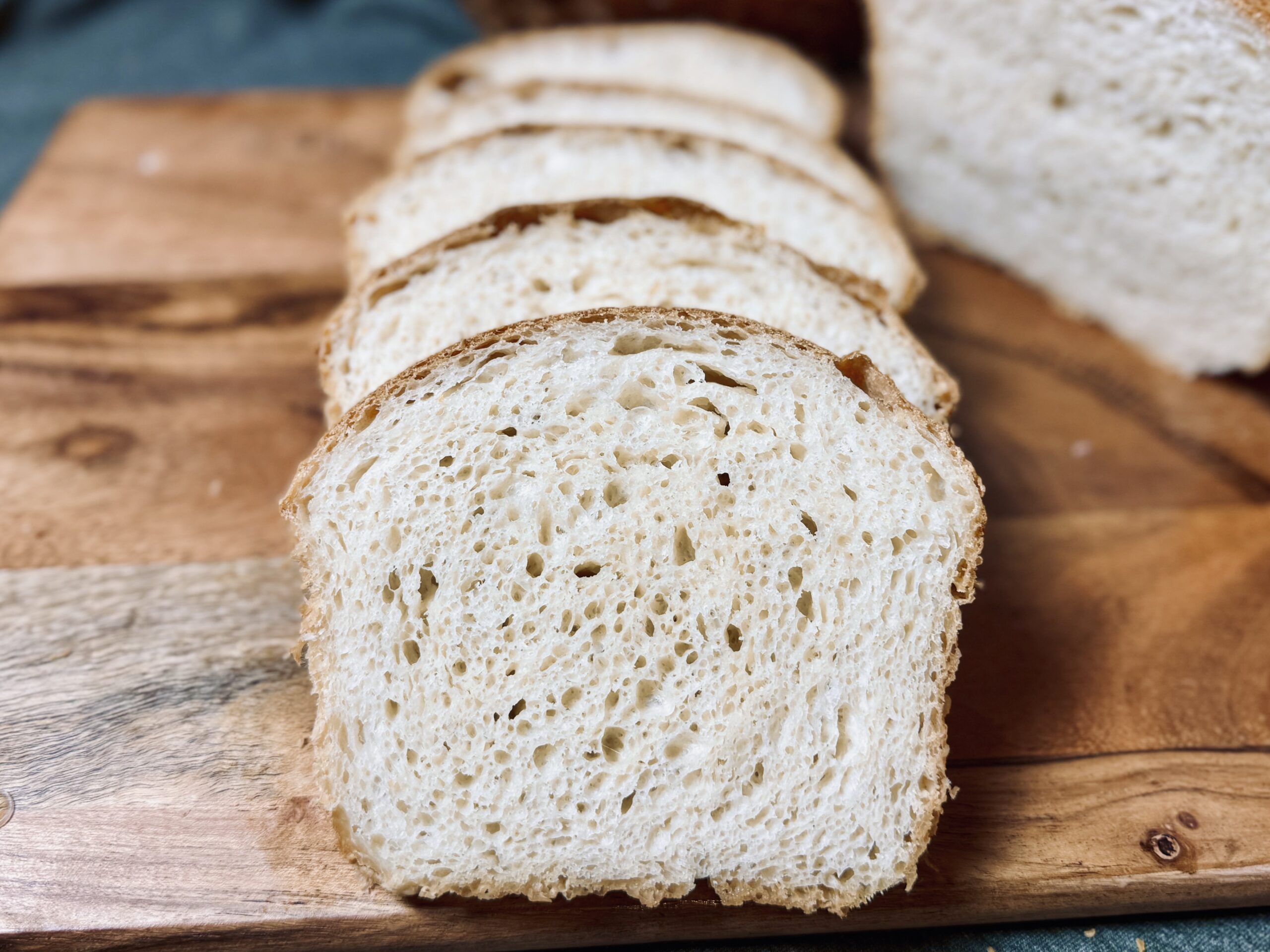
Suggested Timeline
Suggested Timeline
DAY 1
7:00 p.m.
- Mix the dough.
7:30 p.m.
- Begin the strengthening process.
10:00 p.m.
- Shape the dough.
DAY 2
7:00 – 9:00 a.m.
- Wash, bake, and enjoy!
Optionally, you can store the risen loaf in the fridge and bake later, when you are ready.
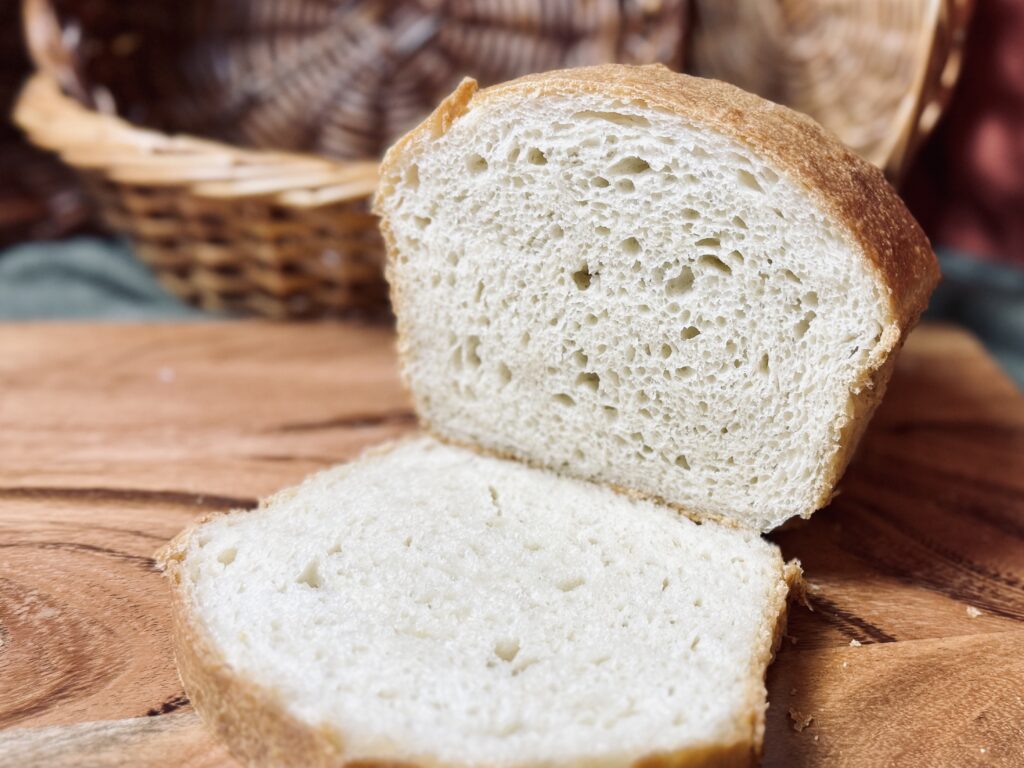
📌 Quick Tip: Read the recipe in its entirety before you start cooking. This will help you understand the ingredients, steps, and timing involved, and allow you to prepare any necessary equipment or ingredients beforehand.
High Protein Cottage Cheese Sandwich Bread
Ingredients
For baking
Instructions
-
Make the dough:
- Blend cottage cheese with the egg whites in a blender.
- Transfer to a mixing bowl. Add sourdough starter and neutral oil. Mix well.
- Add bread flour and salt. Mix everything to form a shaggy dough. Cover.
-
Strengthen the dough:
- Rest 30 minutes after mixing.
- Knead 2-3 minutes, using wet hands to prevent things from becoming too messy.
- Rest 30 minutes.
- Knead 2-3 minutes.
- Rest 30 minutes.
- Stretch and fold #1: 6-8 folds.
- Rest 30 minutes.
- Stretch and fold #2: 4-6 folds.
- Rest 30 minutess.
- OPTIONAL - Stretch and fold #3: 4 folds.
- OPTIONAL - Rest 30 minutes.
-
Shape the dough:
- Flour a working surface (fairly heavy, but not obnoxiously).
- Turn the dough out. It will still be sticky.
- Flour the top of the dough and pat into a rectangle.
- Fold the left and right sides of the dough into the center. Then, roll up the dough into a log. Pinch the seams closed.
- Transfer to a greased 9 X 5 inch (1.25 lb) loaf pan, seam side down.
-
Rest and rise:
- Cover the dough and allow it to rest and rise until it completely fills up the loaf pan and is level with, or slightly above, the edge. (About 8-9 hours, or up to 12 hours in a cooler environment.)
-
Wash and bake:
- Preheat an oven to 350 F (175 C).
- Boil some water in a tea kettle or over the stovetop.
- Make an egg wash by whisking one whole egg or one egg yolk (if you have some leftover from separating eggs) until smooth.
- Remove the cover from your dough and brush the egg wash all over the risen loaf. Don’t be afraid to pop any large air bubbles.
- Pour the boiling water into a water-safe, oven-safe pan placed next to the bread in the oven. Bake for 45-50 minutes, or until the internal temperature reaches 190 F (88 C).
-
Cool and enjoy!
- Cool 5-10 minutes in the loaf pan before transferring to a wire rack to cool completely.
- Wait at least 30 minutes before slicing.
Nutrition Facts
Servings 12
- Amount Per Serving
- Calories 176.99kcal
- % Daily Value *
- Total Fat 3.94g7%
- Saturated Fat 0.58g3%
- Trans Fat 0.01g
- Cholesterol 2.62mg1%
- Sodium 169.56mg8%
- Potassium 82.87mg3%
- Total Carbohydrate 26.75g9%
- Dietary Fiber 0.92g4%
- Sugars 1.18g
- Protein 7.99g16%
- Vitamin A 5.7 IU
- Calcium 24.44 mg
- Iron 1.7 mg
- Vitamin D 0.01 IU
- Vitamin E 0.58 IU
- Vitamin K 1.95 mcg
- Thiamin 0.31 mg
- Riboflavin 0.28 mg
- Niacin 2.67 mg
- Vitamin B6 0.03 mg
- Folate 18.4 mcg
- Vitamin B12 0.08 mcg
- Phosphorus 66.22 mg
- Magnesium 13.7 mg
- Zinc 0.42 mg
* Nutrition values are auto-calculated and should be used as an approximation only.
Notes
- Storage: Store in a Ziploc or bread bag on the counter for three to five days, or slice and store in the freezer. Toast to warm.
- An optional substitution for the egg whites is whole eggs. Use 185 g of whole eggs, which is about three large (50 g) eggs plus one egg white (save the yolk for the wash). The flavor is not quite the same (and not my preference), but it still makes a good, high protein bread that is light and fluffy.
- After the dough is risen, you can stick it in the refrigerator until you are ready to bake, if needed.
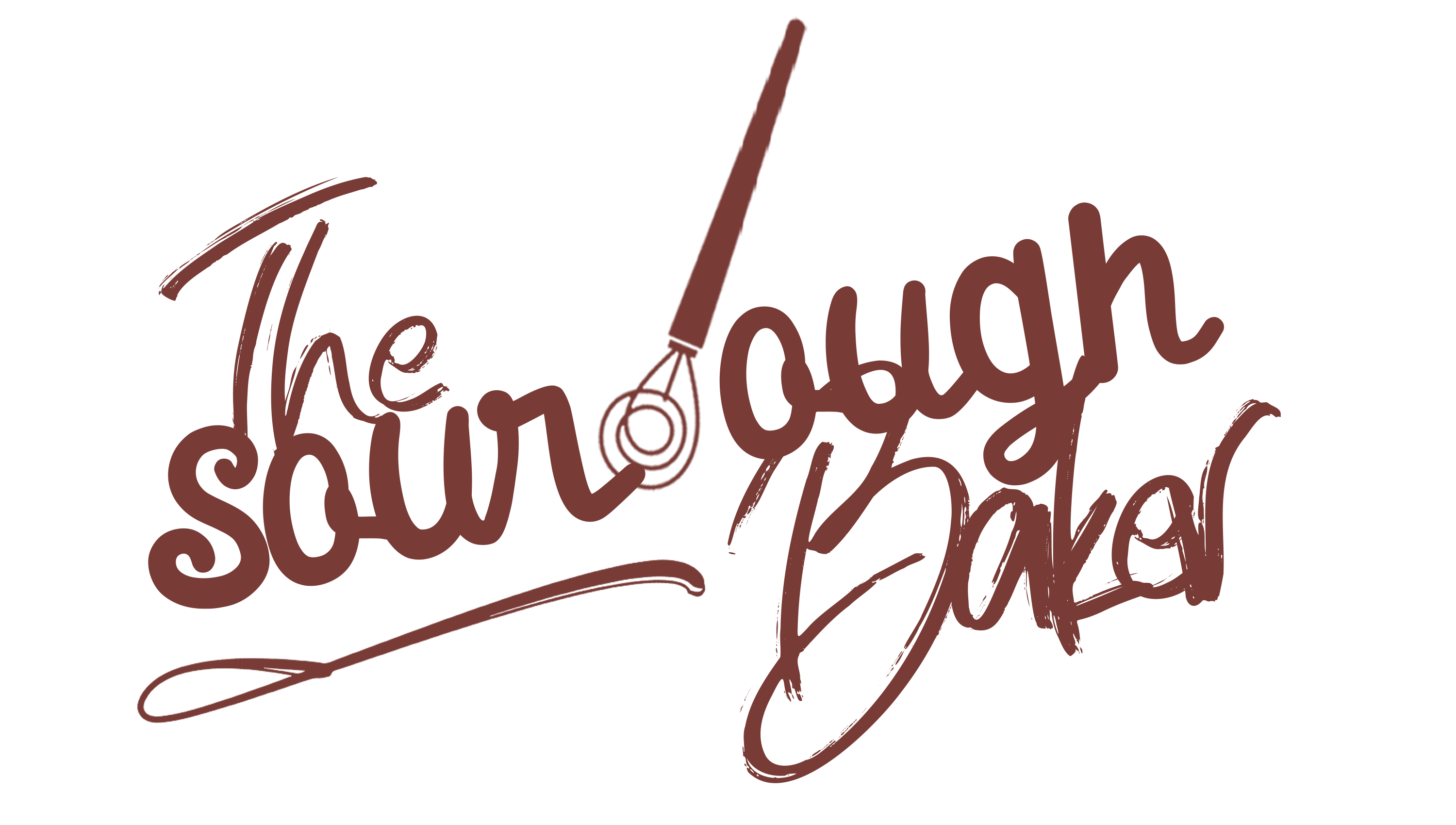
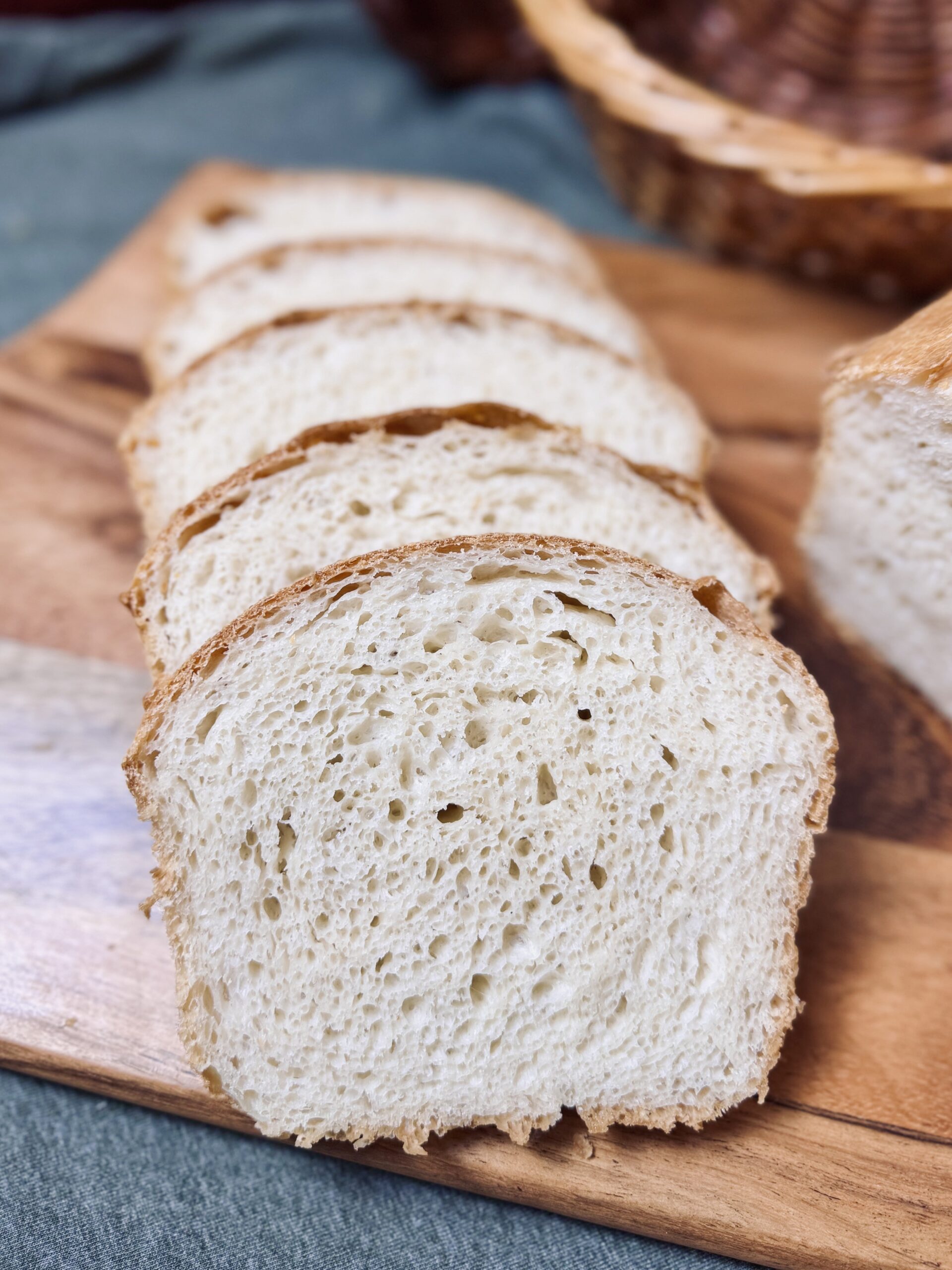

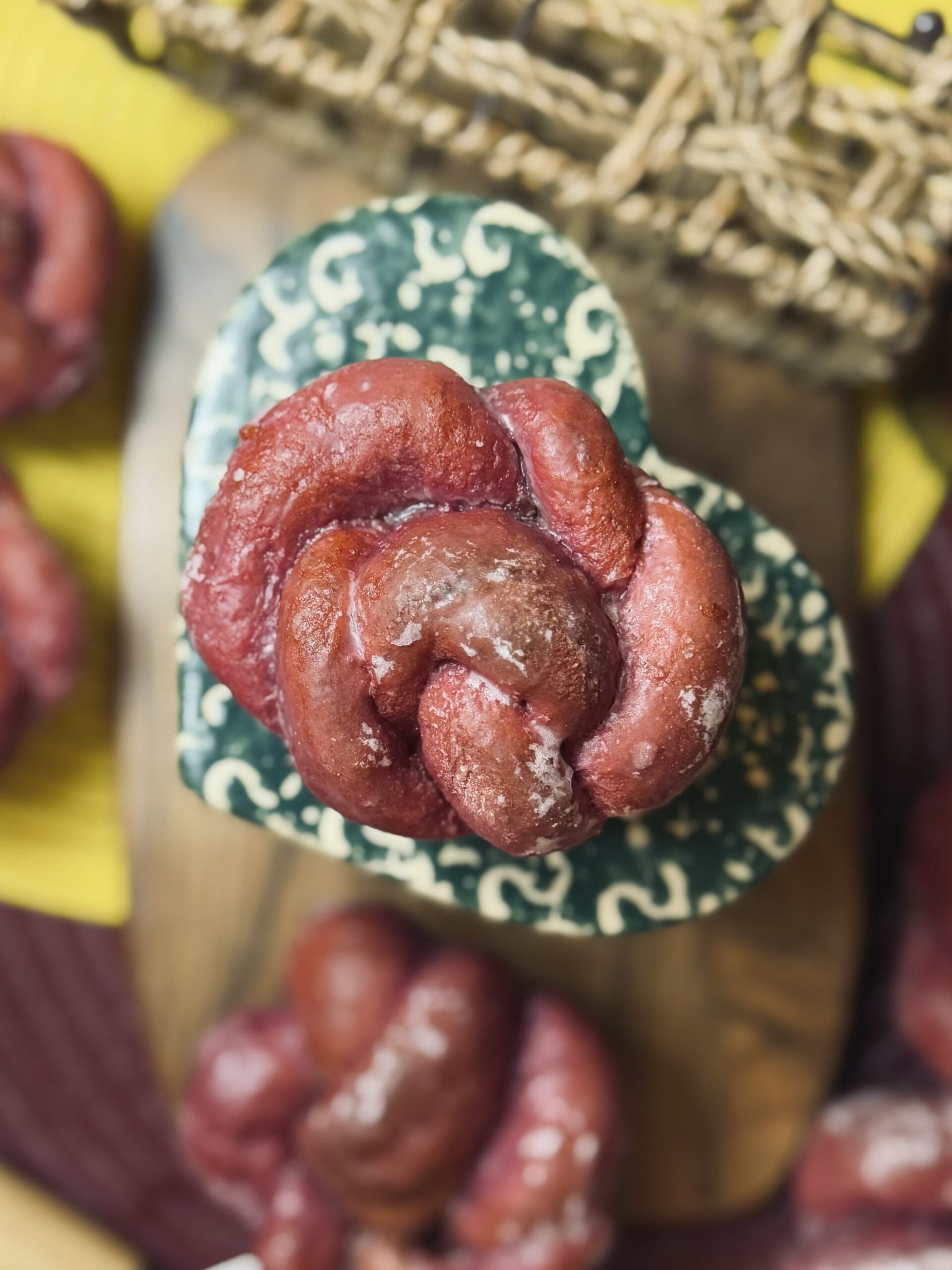
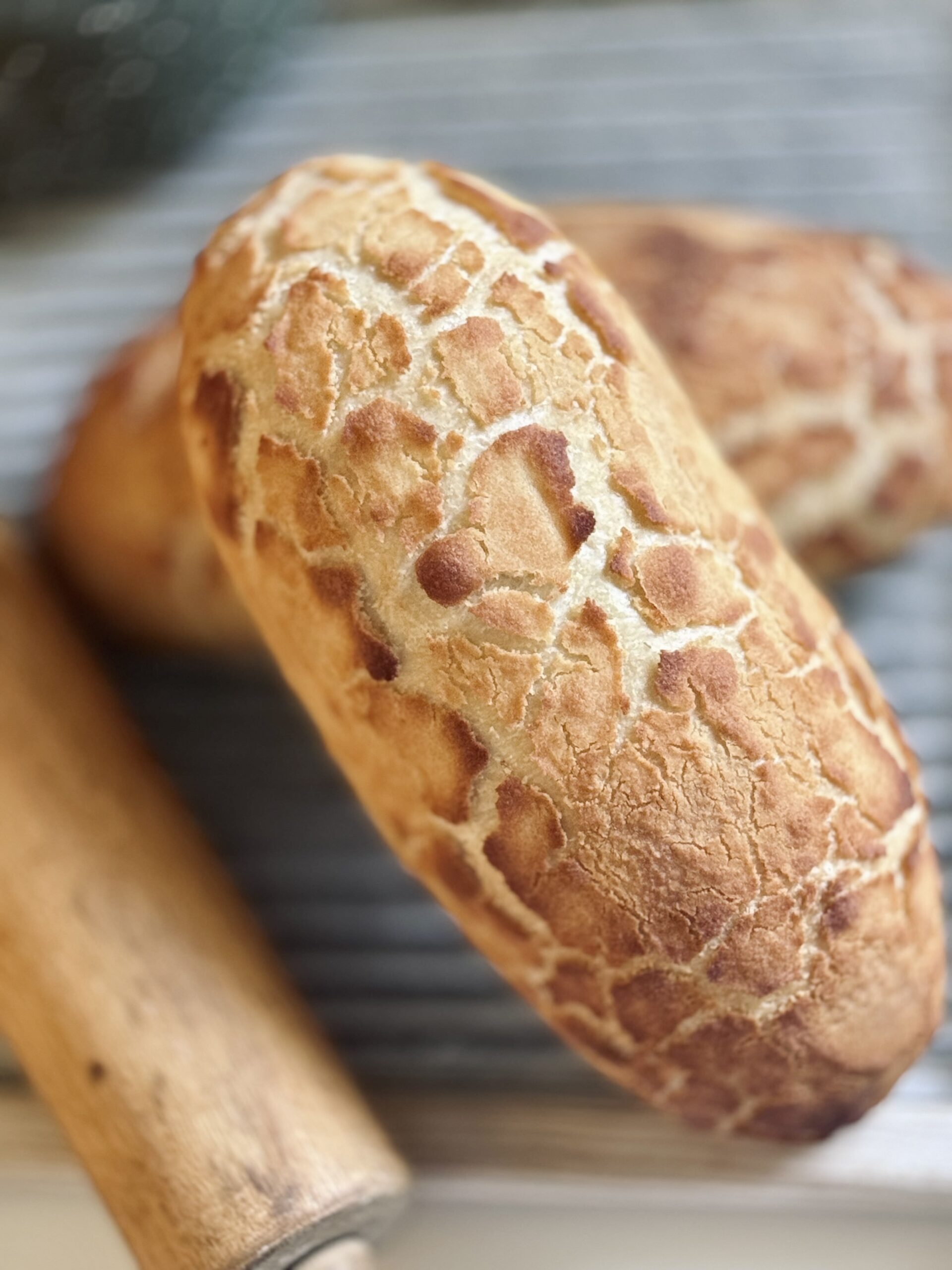
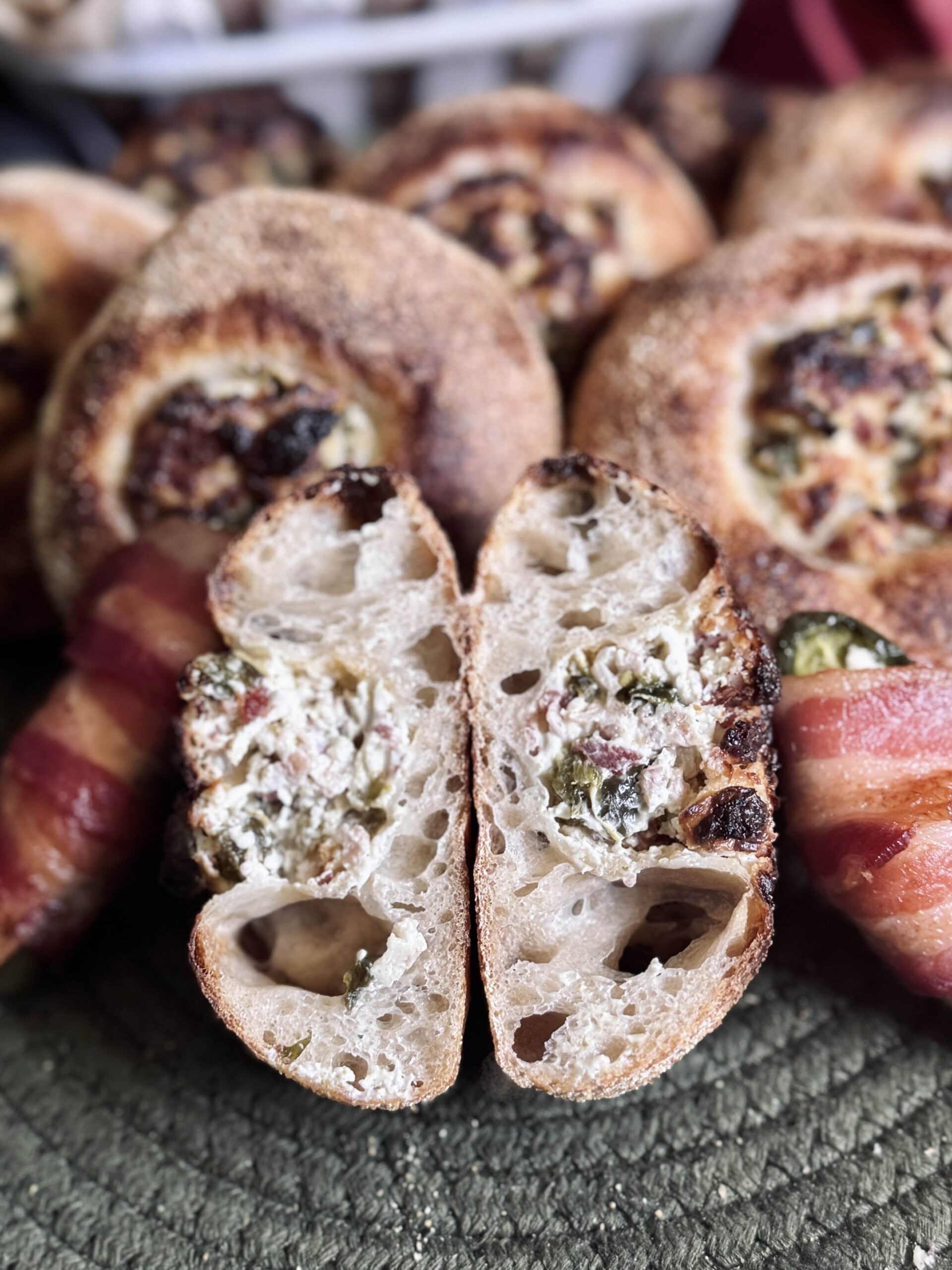
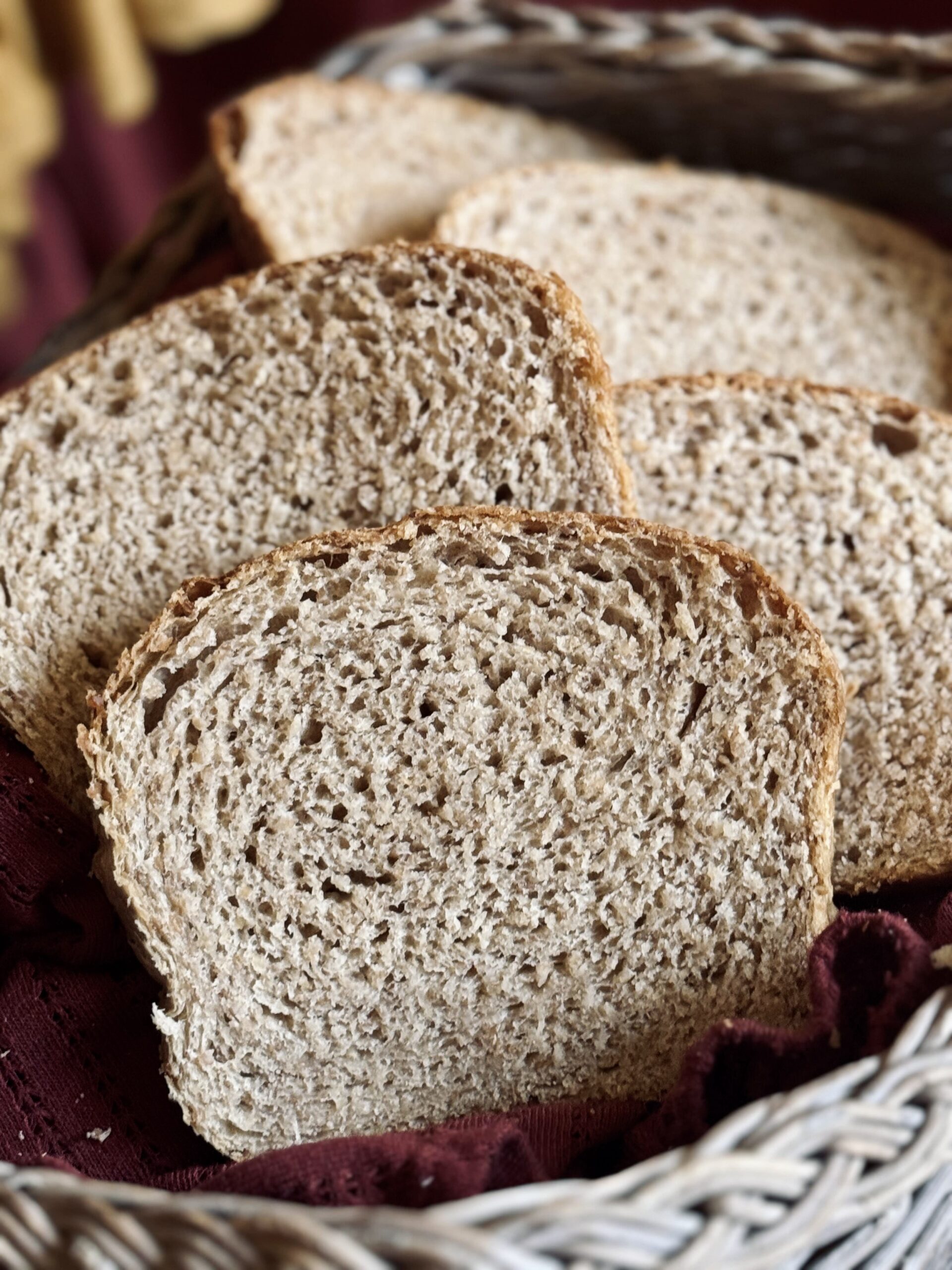
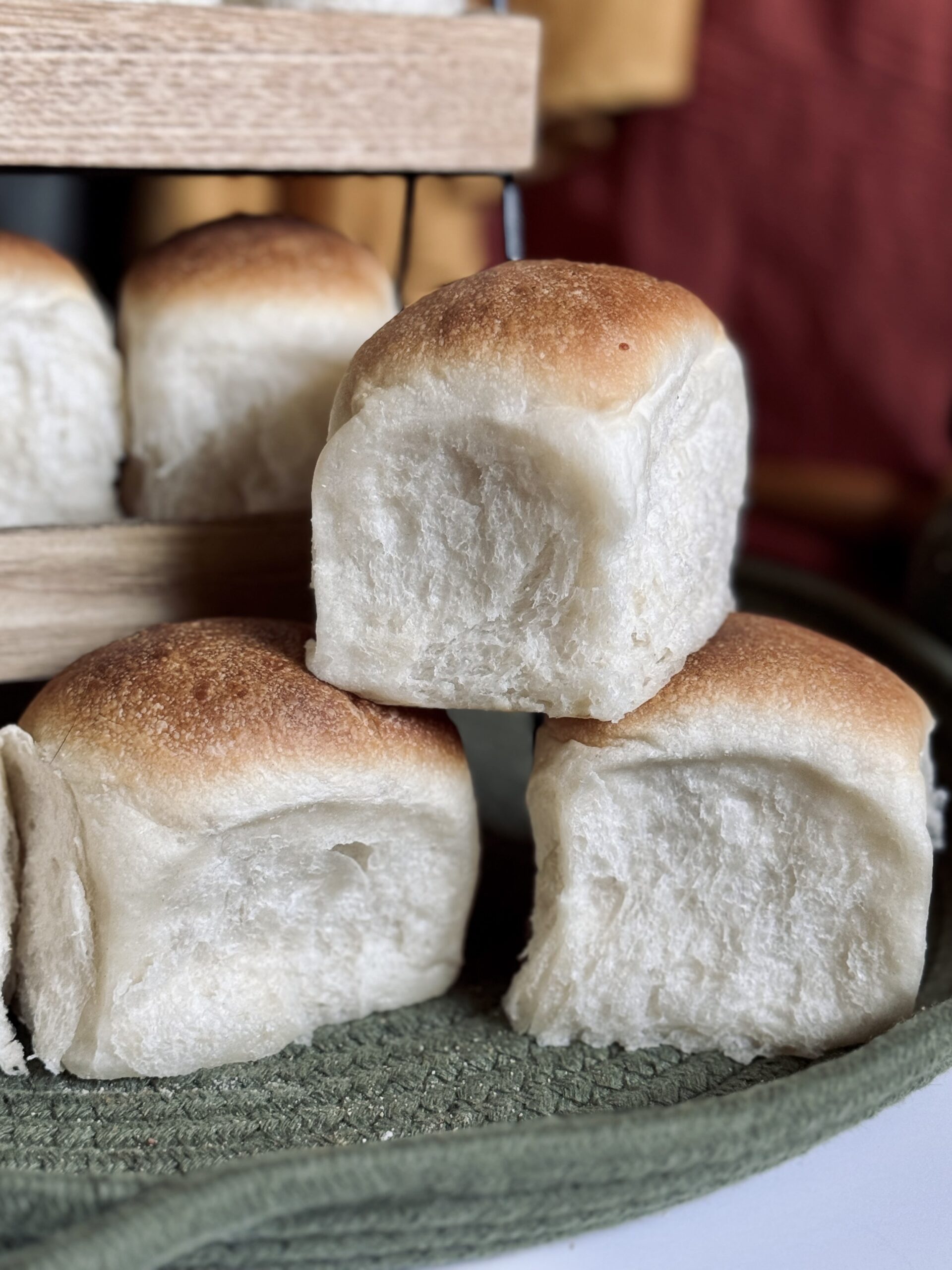
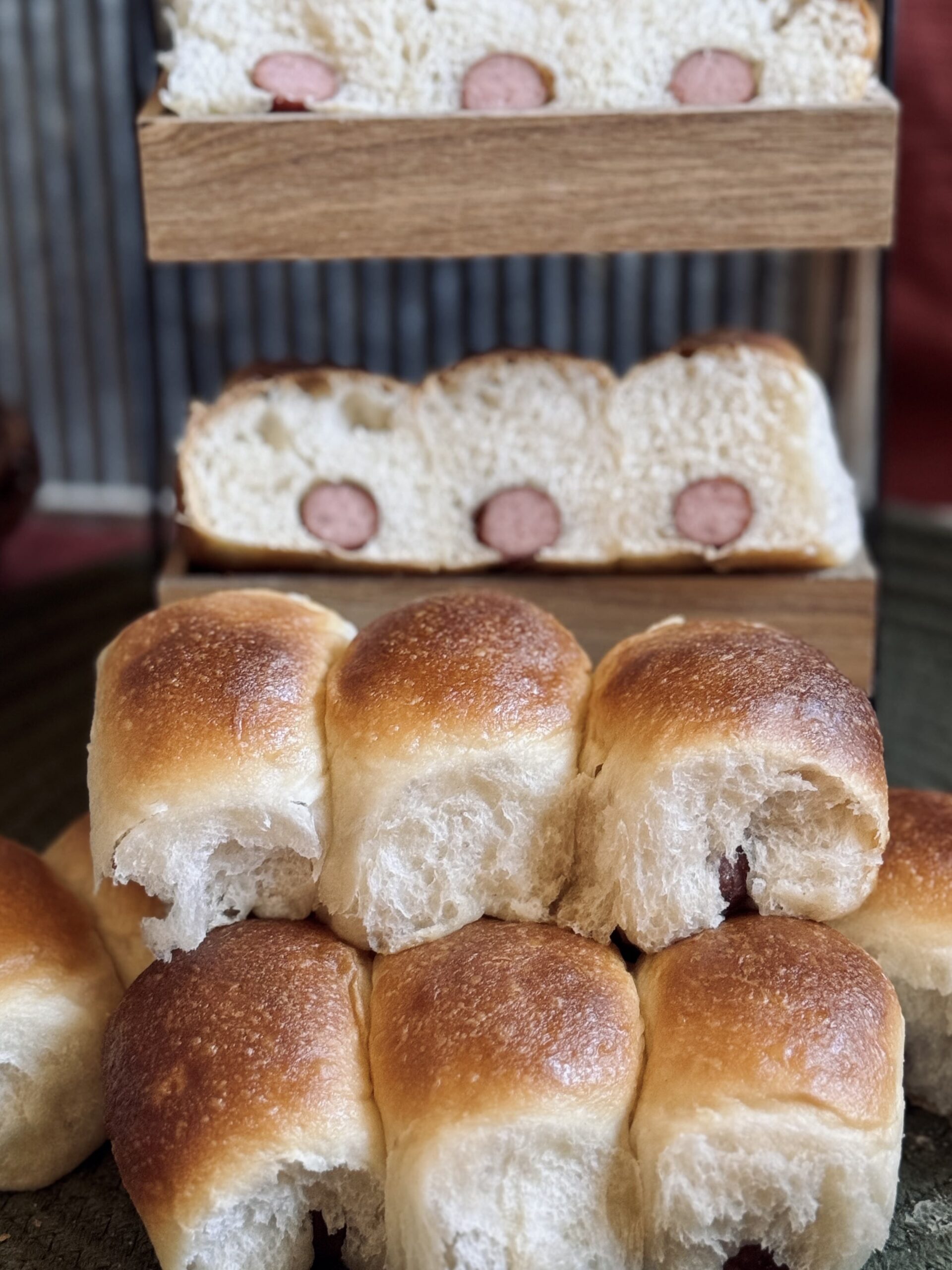
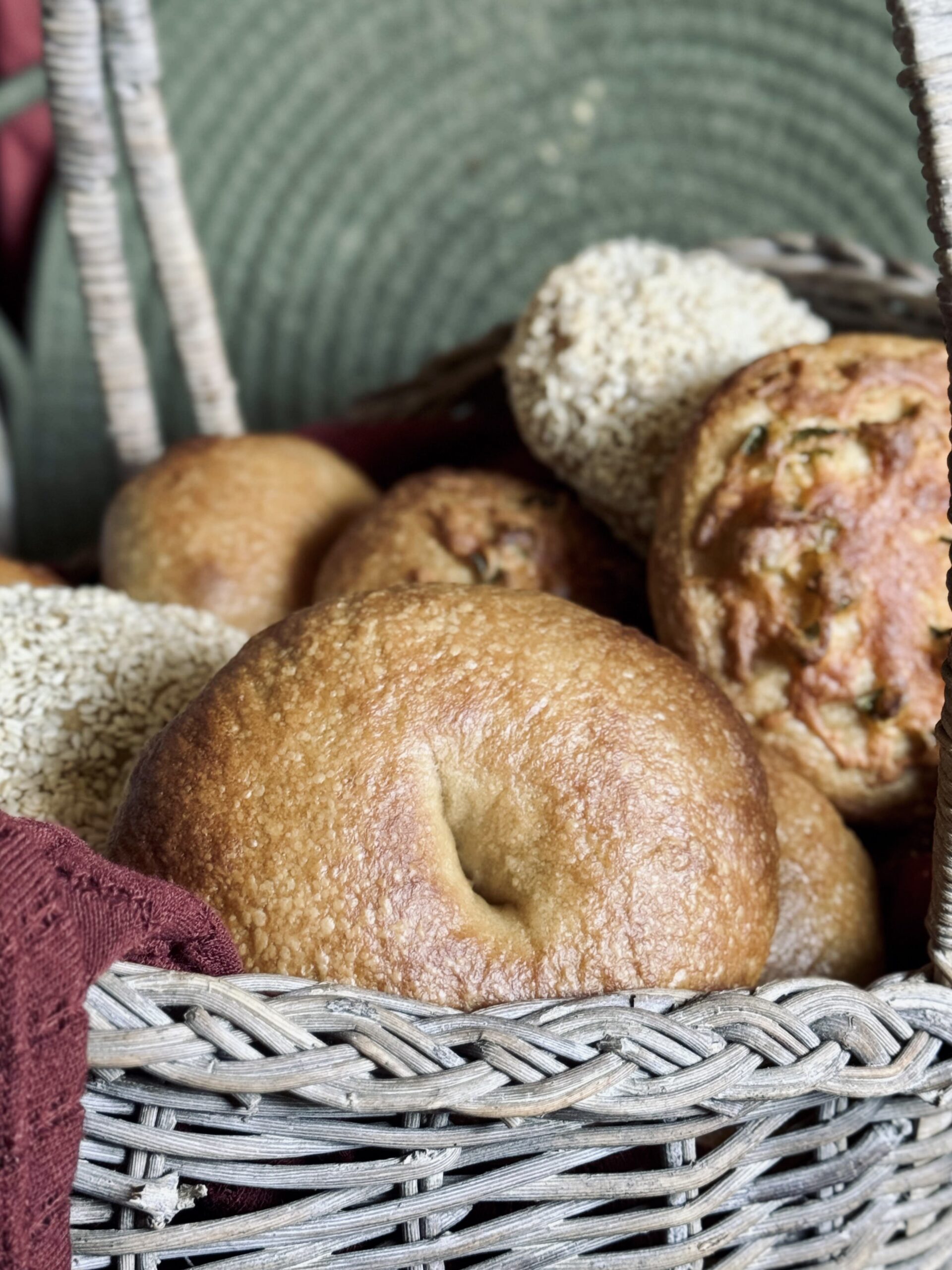
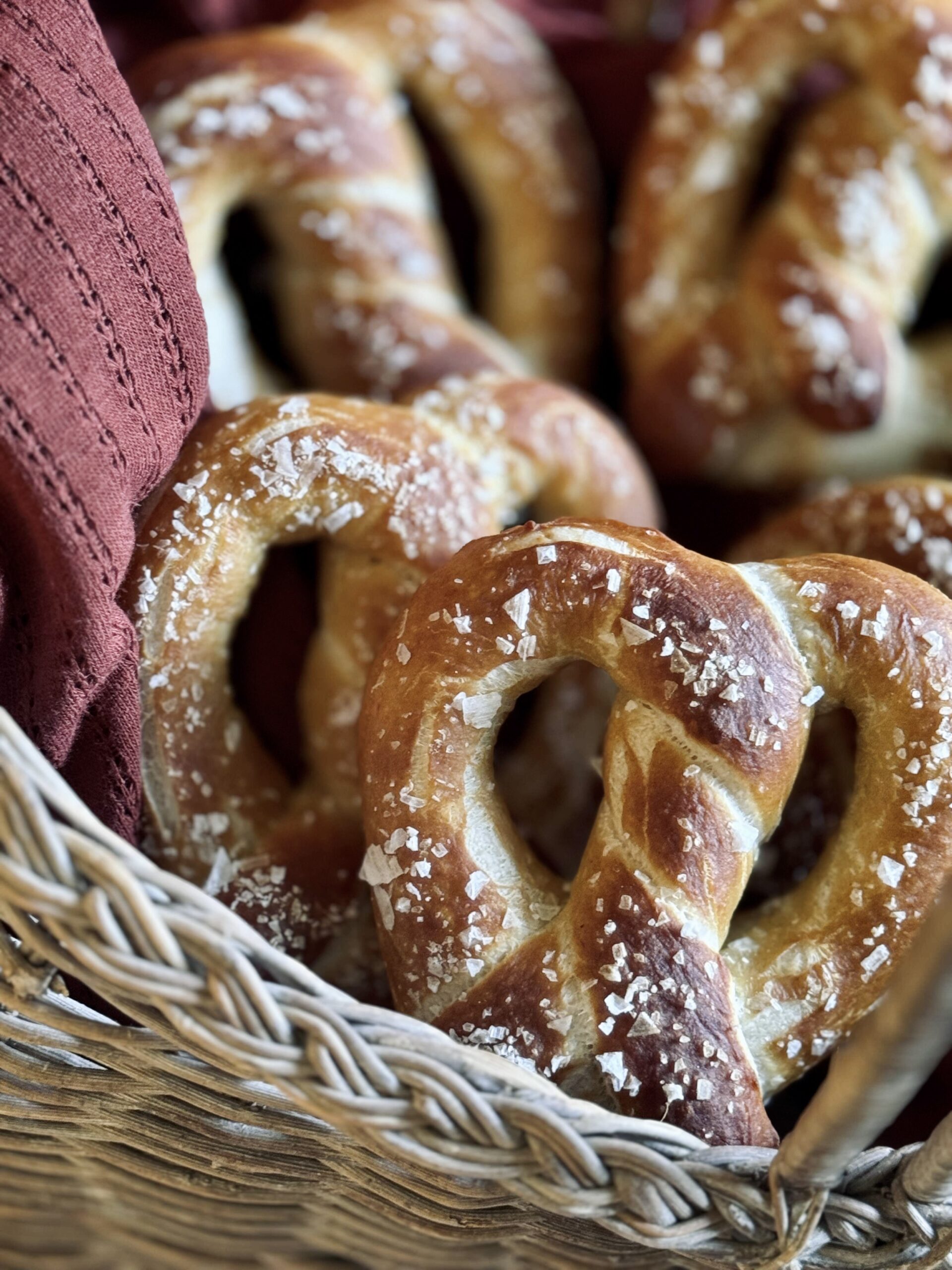
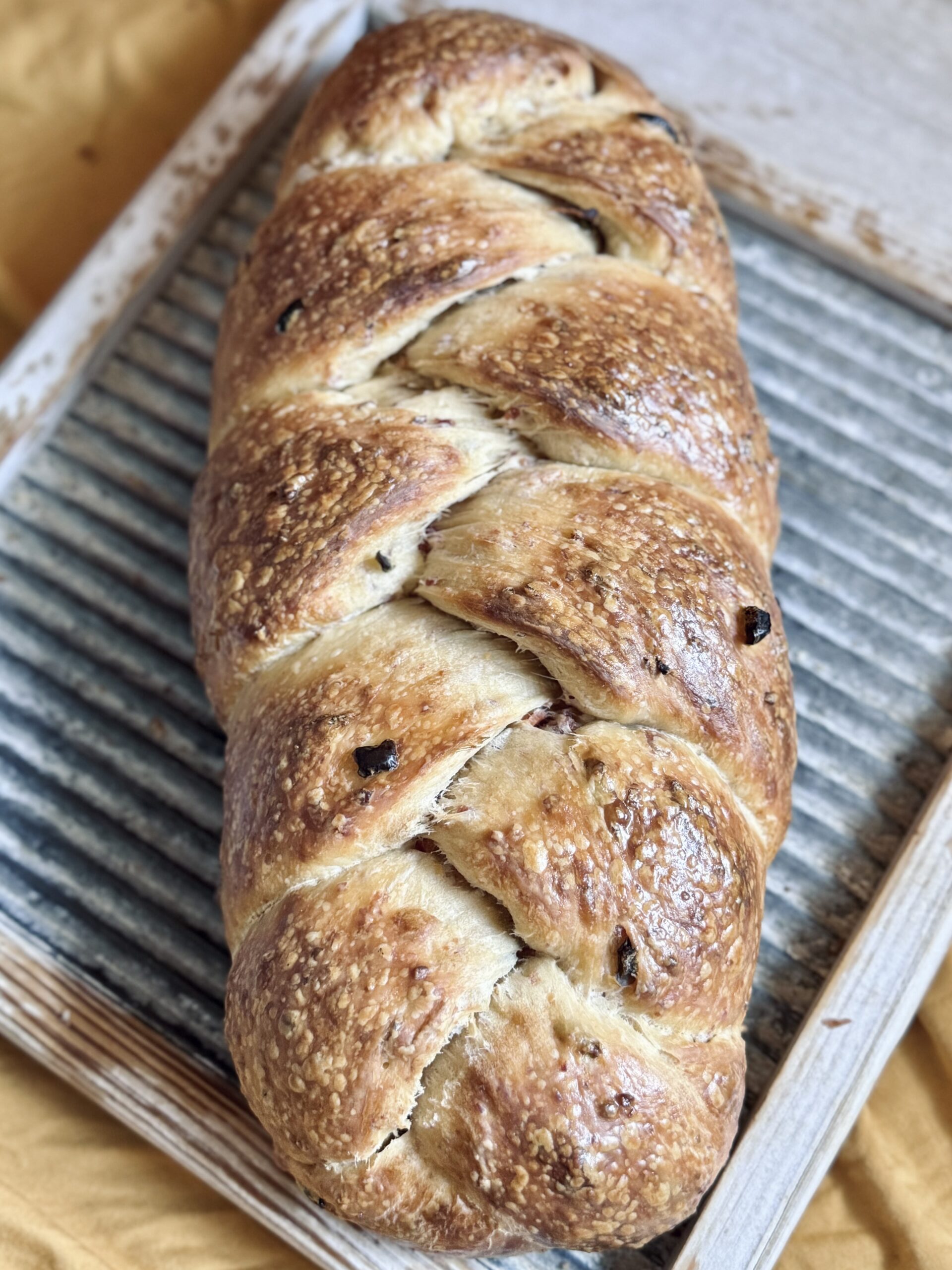




User Reviews
love it, will probably be making as our daily bread, soft and moist.